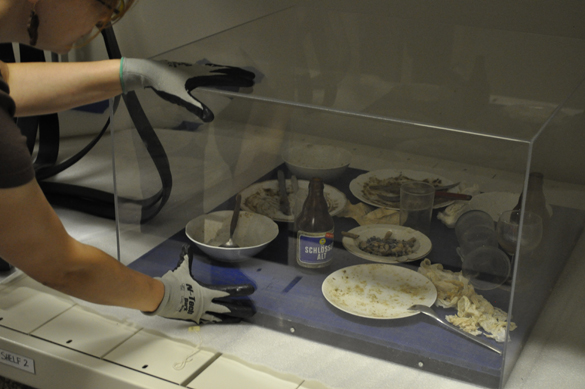New Aquisition: Daniel Spoerri
 Over the last century, artists have often sought to break down the boundaries between art and everyday life--and the Smart just acquired a work of art by the Swiss artist Daniel Spoerri (b. 1930) that exemplifies this way of working.
Over the last century, artists have often sought to break down the boundaries between art and everyday life--and the Smart just acquired a work of art by the Swiss artist Daniel Spoerri (b. 1930) that exemplifies this way of working. In the early 1960s, Spoerri pioneered a practice that he later defined as "Eat Art." As the name implies, much of Spoerri's art centered on meals: in addition to writing and making more traditional drawings and objects, Spoerri staged banquets and created restaurant-art-projects such as the fabled Restaurant Spoerri and adjacent Eat Art Galerie in Dusseldorf. These hubs of artistic experimentation and social pleasure attracted leading members of the European avant-garde art community as well as the general public. They were also sites where Spoerri created some of his famous "snare pictures," for which the remains of an actual meal were affixed to a table and then turned sideways to create an object that hangs on the wall like a painting. A kind of readymade still life, the composition was determined by chance--the residue of consumption and convivial interaction rather than aesthetic intention.
While researching Feast this past spring, I discovered that a classic, abjectly beautifully Spoerri snare picture--made at Eat Art on June 17, 1972--was at a Swiss auction house. The Museum was successful in acquiring it and, as a result, the Smart is now one of the few US museums to own snare pictures (along with the Walker Art Center and the Museum of Modern Art). The work will be a centerpiece of Feast along with a rich selection of other material by Spoerri.
After Feast's national tour, it will return to campus as a lasting resource for research and teaching--and, we hope, an inspirational example of how artists can make powerful works out of common experiences.